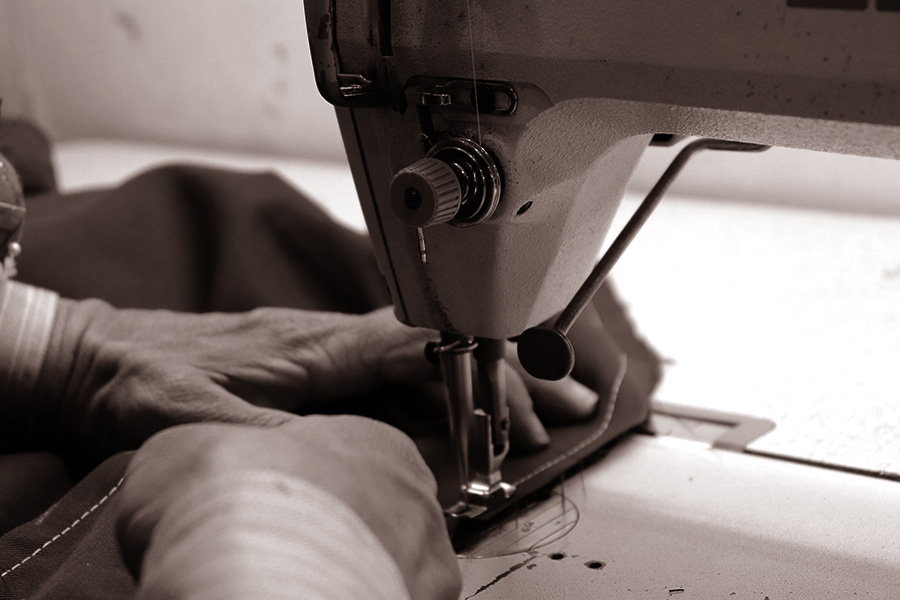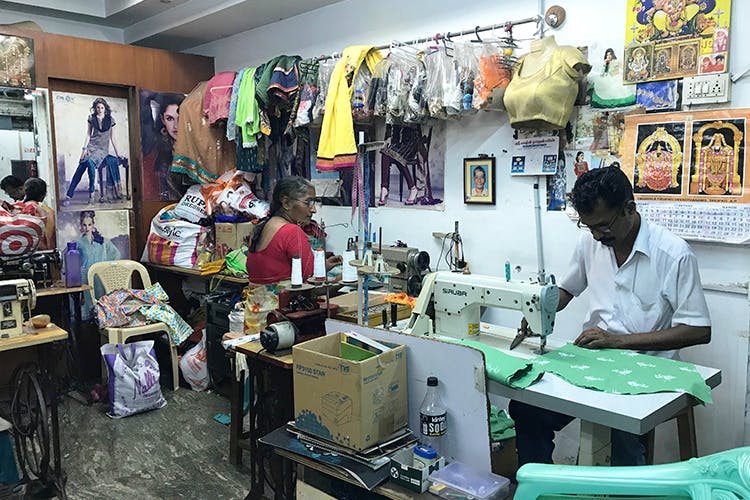Tailor Perth Excellence: Your Location for Bespoke Tailoring
Tailor Perth Excellence: Your Location for Bespoke Tailoring
Blog Article
Comprehending the Tailoring Refine: From Material Choice to Final Fitting for the Suitable Wardrobe
The customizing process is a complex interplay of art and scientific research, starting with the essential choice of textile option and culminating in the accurate adjustments of final fittings. Each textile type brings special high qualities that influence not just the visual appeal yet additionally the garment's longevity and suitability for different events. Understanding the nuances of customizing methods can elevate one's closet to unmatched degrees of class. As we explore these components even more, one must consider how also the smallest details can dramatically impact the general outcome of one's personal design.
Significance of Fabric Option
Selecting the right fabric is important in the customizing process, as it directly influences the convenience, durability, and total visual of the final garment (tailor perth). The choice of fabric establishes the foundation for the garment's performance, performance, and design. Various textiles possess distinct properties, such as stretch, breathability, and weight, which can significantly influence just how the garment drapes and fits the body
In addition, textile selection influences the garment's longevity and ease of treatment. Top notch materials can hold up against damage, keeping their appearance and framework gradually, while lower-quality products may bring about pilling or fading. Additionally, the ideal material contributes to the garment's capability to shift across seasons and occasions, consequently improving versatility.
A tailored piece made from an appropriate material not just showcases craftsmanship however also elevates the user's confidence. As a result, understanding the nuances of material selection is vital for any customizing undertaking. It guarantees that the final product not just meets the visual needs of the customer but likewise straightens with functional needs, therefore achieving an unified balance in between kind and function in the customized closet.
Sorts Of Fabrics and Their Uses
Recognizing the various types of fabrics readily available is important for making informed choices during the customizing process. Each textile possesses unique characteristics that determine its viability for specific garments and celebrations.
Cotton, recognized for its breathability and soft qualities, is optimal for sportswear and summertime apparel. Its versatility permits it to be tailored right into everything from t shirts to outfits. Wool, on the other hand, is favored for its heat and framework, making it an outstanding selection for official suits and outerwear - tailor perth. Its all-natural elasticity assists garments preserve form gradually.
Silk exudes high-end and is light-weight, making it ideal for eveningwear and delicate blouses; nevertheless, it requires mindful handling as a result of its delicacy. Linen, with its distinctive coating, is a popular selection for warm climates, offering a crisp and ventilated feel, however it wrinkles quickly, which might influence the garment's appearance.
Artificial textiles, such as polyester and nylon, offer resilience and resistance to creases, making them appropriate for everyday wear and energetic garments. Comprehending these textile kinds and their buildings enables better decision-making, ensuring that each tailored item not only fits well yet additionally aligns with the designated objective and celebration.
The Tailoring Techniques Clarified
The art of tailoring relies upon a selection of methods that transform fabric into well-fitted garments. Central to this procedure is pattern drafting, where a tailor develops templates based on the client's dimensions and preferred style. This preliminary action ensures that the garment will fit the wearer effectively before any kind of reducing takes place.
Once patterns are developed, reducing strategies come right into play. Precision is critical as errors can result in misfitting garments. Tailors typically make use of numerous cutting methods, such as single-layer cutting for complex styles and multiple-layer cutting for efficiency on common patterns.
Basting is an additional necessary strategy, permitting tailors to temporarily sew textile pieces together for an initial fitting. This approach offers the possibility to analyze the drape and total shape before final sewing.
Seaming strategies, including french seams and flat-felled seams, enhance the garment's sturdiness and visual appeal. Tailors likewise employ techniques such as interfacing and cushioning to offer structure and form to certain areas, like shoulders and collars.
Finally, finishing strategies, including hemming and side finishing, make certain the garment's durability while offering a refined appearance. With each other, these strategies create the backbone of reliable customizing, causing elegant, tailor-made garments.
Fitting Changes and Considerations

Key official statement considerations consist of the shoulder fit, which should neither droop neither limit activity, and the sleeve size, which must allow for comfy arm motion while preserving a sleek look. In addition, changes at the waistline can fine-tune the shape, with alternatives to let out or absorb textile as needed.
The rise of trousers is an additional important factor; it must sit conveniently over the hips without creating pain, enabling for convenience of activity. Hemming sizes for both trousers and skirts ought to show the user's preferred design while appreciating proportions.

Preserving Your Tailored Garments
Always adhere to the care tag guidelines, which may advise completely dry cleansing for fragile textiles or maker washing for more sturdy materials. Stay clear of frequent laundering, as this can put on down the fabric and modify the garment's shape.
Storage space is equally vital; usage padded wall mounts for coats and layers to preserve shoulder framework, and shop trousers folded up nicely or hung to stop creasing. Shield garments from direct sunshine, which can discolor shades and damages fibers.
Furthermore, periodic examinations for small fixings can prevent bigger concerns. Inspect for loose switches, tearing joints, or signs of moth damages, attending to these troubles quickly to maintain the garment's stability.
Finally, take into consideration seasonal turning. Using tailored items in moderation allows fabrics to recuperate, prolonging their lifespan. By implementing these upkeep techniques, you can make certain that your tailored garments stay as excellent as the day you first wore them, boosting your perfect closet for many years to come.
Conclusion
The customizing process, encompassing fabric choice, competent methods, and precise fitting modifications, plays an essential role in developing garments that enhance both comfort and style. Recognizing the importance of maintenance expands the life of tailored garments, solidifying their value in a well-curated wardrobe.
Selecting the appropriate material is crucial in the tailoring process, as it directly affects the comfort, longevity, and overall aesthetic of the Clicking Here final garment. The selection of textile establishes the structure for the garment's performance, performance, and design. Different materials have distinct properties, such as breathability, weight, and stretch, which can substantially impact how the garment drapes and fits the body.
The art of customizing relies on a selection of methods that transform material right into well-fitted garments.The tailoring process, including fabric selection, knowledgeable techniques, and exact fitting changes, plays an important role in developing garments that enhance both comfort and style.
Report this page